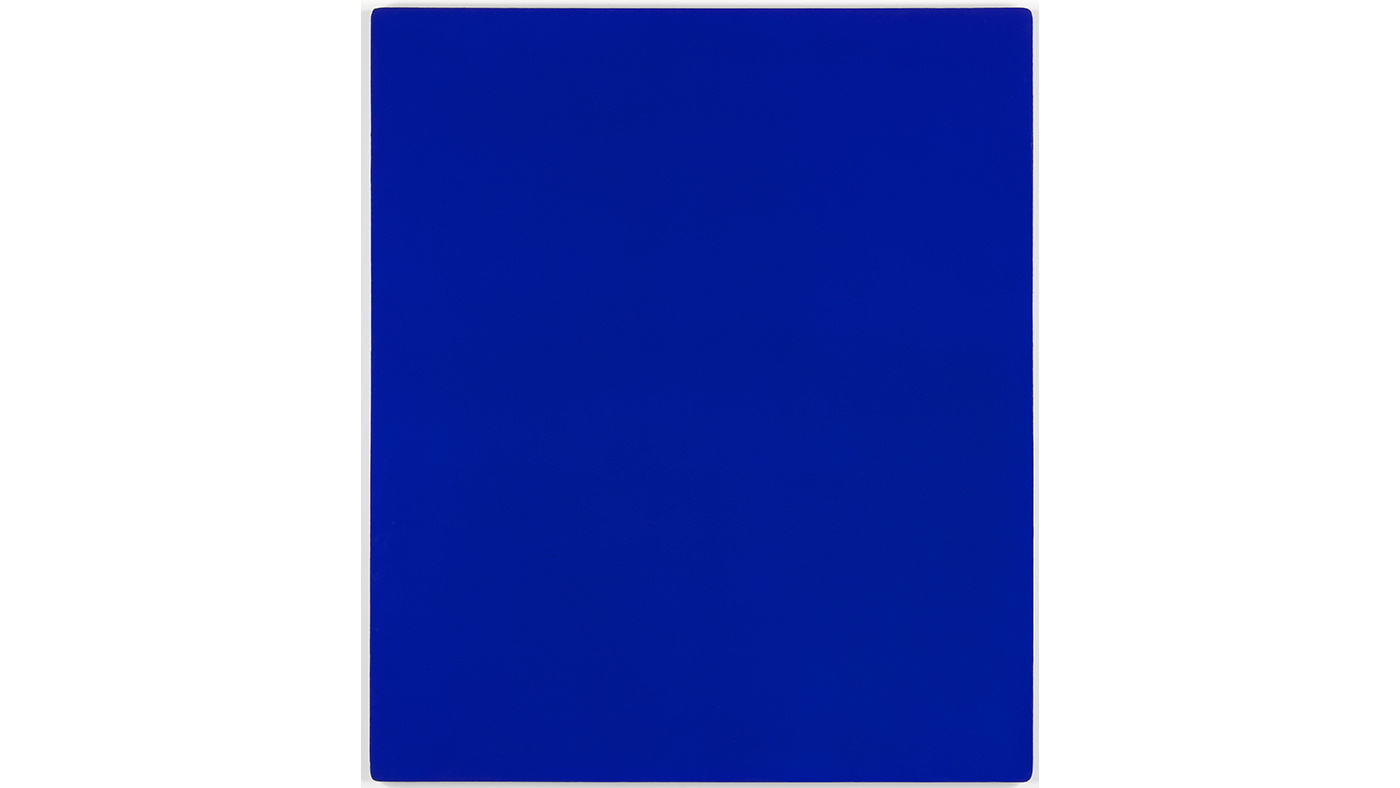Paint it blue: Yves Klein at Tate Liverpool
Tamar Hemmes discusses the brief yet influential career of the artist as the museum holds a major exhibition of his work



Yves Klein died of a heart attack at the age of 34 and was only active as an artist for seven years. It was such a short period of time, yet he left an interesting and diverse body of work that anticipated many of the movements that developed in the 1960s, including Pop Art, Performance, Minimalism and Nouveau Realisme. What's so important about him is that he introduced many new attitudes to the relationship between life and art, painting and action, and also to the object and the ideas behind it.
The new show at Tate Liverpool is one of the first significant UK exhibitions of Yves Klein's work for more than 20 years. His full range is explored, including his famous single monochrome paintings, as well as his Anthropometry series, made using naked women as human paintbrushes, and Fire paintings, produced with a flamethrower. These are fascinating artworks that reveal his personality and unique way of working.
Klein is best known for his blue monochromes and his patented colour, International Klein Blue, a pure pigment that can't be diluted, created in collaboration with a chemist. He used this ultramarine blue for his Anthropometry series and it became his signature colour.
The Week
Escape your echo chamber. Get the facts behind the news, plus analysis from multiple perspectives.

Sign up for The Week's Free Newsletters
From our morning news briefing to a weekly Good News Newsletter, get the best of The Week delivered directly to your inbox.
From our morning news briefing to a weekly Good News Newsletter, get the best of The Week delivered directly to your inbox.

The Anthropometry paintings were staged events, at which Yves collaborated with and choreographed models in front of a small audience. He didn't touch the paint himself, but instructed the models to sponge their bodies and then make prints on the canvas. For him to step back and direct the process rather than make the work himself was such a different way of approaching things. He even wore white gloves to avoid getting the blue pigment on his hands.
In this sense, Klein was ahead of his time. His aim was to redevelop people's experience of art, to shift the emphasis from the artist as the maker of the object to the artist as an orchestrator. Some critics are sceptical, especially of artworks such as the blue monochromes, but with Klein it's all about the remains of the creative process, which is a good way of looking at artistic practice in general.
His career was well documented through photography, and having many of these images on display is, for me, the highlight of the exhibition. They demonstrate that it's not just what you see as the end result, it's about everything that goes on behind it.
Tamar Hemmes is assistant curator at Tate Liverpool. Yves Klein runs from 21 October 2016 until 5 March 2017; tate.org.uk
A free daily email with the biggest news stories of the day – and the best features from TheWeek.com
-
 The ultimate films of 2025 by genre
The ultimate films of 2025 by genreThe Week Recommends From comedies to thrillers, documentaries to animations, 2025 featured some unforgettable film moments
-
 Political cartoons for January 3
Political cartoons for January 3Cartoons Saturday's political cartoons include citizen journalists, self-reflective AI, and Donald Trump's transparency
-
 Into the Woods: a ‘hypnotic’ production
Into the Woods: a ‘hypnotic’ productionThe Week Recommends Jordan Fein’s revival of the much-loved Stephen Sondheim musical is ‘sharp, propulsive and often very funny’